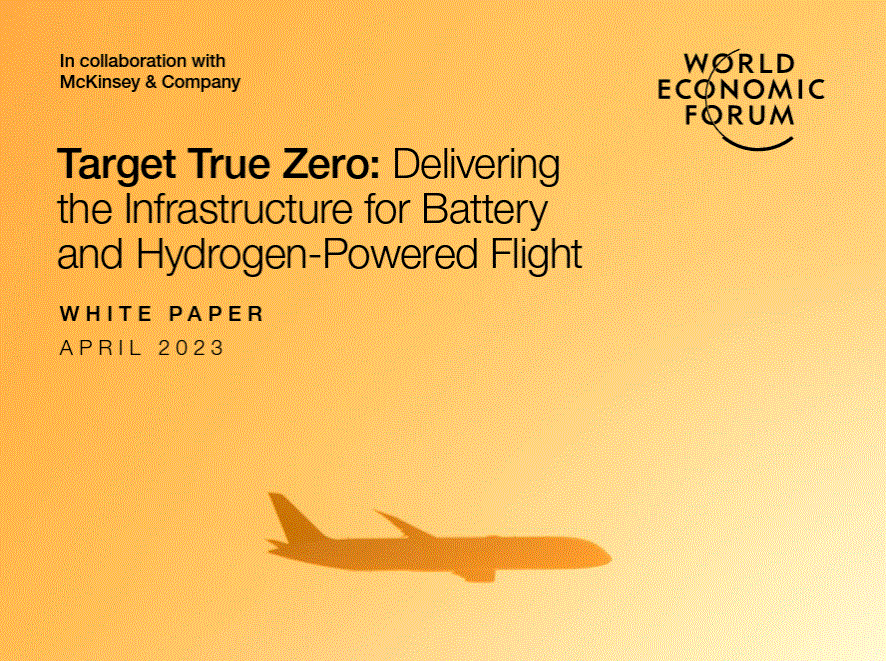
In a new report prepared by the World Economic Forum in conjunction with McKinsey & Company, Target True Zero: Delivering the Infrastructure for Battery and Hydrogen-Powered Flight the authors predict electricity costs for alternative aviation propulsion will be 76-86% over market rates.
This is one of ten findings of the report. Here is the full list:
- Global demand for alternative propulsion could require 600-1,700 TWh of clean energy by 2050. This is equivalent to the energy generated by around 10-25 of the world’s largest wind farms, or a solar farm half the size of Belgium.
- Large airports could consume 5-10 times more electricity by 2050 than they do today, to support alternative propulsion.
- Alternative propulsion will require two new infrastructure value chains – one for battery electric aviation and one for hydrogen – which may include a whole variety of new partners that are not currently part of the aviation ecosystem.
- Most airports have space for hydrogen liquefaction and storage infrastructure, but not enough land to generate all of the clean energy needed to power battery-electric and hydrogen aircraft.
- Shifting to alternative propulsion will require a capital investment of between USD700 billion and USD1.7 trillion across the value chain by 2050. Approximately 90% of this investment will be for off-airport infrastructure, primarily power generation and hydrogen electrolysis and liquefaction.
- Investment needed for airport infrastructure will be significantly higher for large airports than for smaller airports, but of similar magnitude to other major investments such as building a new terminal.
- Costs to operators of alternative propulsion are expected to be around 76-86% over the market price for green electricity – reflecting additional aviation infrastructure operating costs.
- The investments needed to meet 2050 goals must start now. The first elements of on-airport infrastructure must be in place by 2025 to meet expected energy demand.
- To harness the power of network effects and regional connectivity, coordination of infrastructure investment will be required to make alternative propulsion operations feasible.
- The aviation industry will need to partner with other industries to secure enough green electricity and hydrogen in a supply constrained environment and have a voice in shaping the future of the hydrogen ecosystem.
For more information

